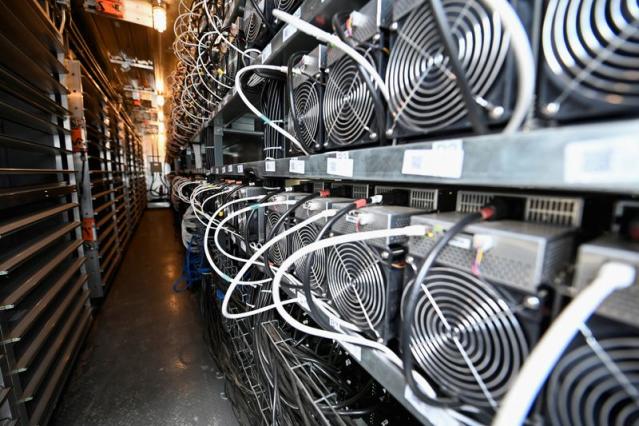Consider that the cryptocurrency frenzy won’t harm you if you choose not to purchase bitcoin. Rethink it.
Around the world, cryptocurrency mining consumes as much electricity as the Netherlands, and this massive energy consumption has negative effects on the planet.
Beyond that, research suggests it might be driving up the cost of electricity.
It’s unclear exactly how much energy is utilized in the US for cryptocurrency mining and how this affects the energy grid as a whole. A US government agency is attempting to ascertain that.
Data on the amount of electricity used by cryptocurrency miners in the US will be gathered, according to an announcement made by the Energy Information Administration, which monitors and reports on energy use. The organization will begin surveying cryptocurrency mining firms in February, and they will be required to reply with information about how much energy they use.
EIA Administrator Joe DeCarolis stated in a statement on Wednesday that the agency plans to keep examining and documenting the energy effects of cryptocurrency mining operations in the US. We will pay particular attention to how the energy requirement for mining cryptocurrencies is changing, pinpoint growth hotspots geographically, and estimate the electricity sources utilized to supply the demand.
Although this is a relatively new and rapidly evolving topic, studies have shown that cryptocurrency mining activities can increase the electricity bills of consumers who live nearby. This is the overall meaning.
Electricity consumption for crypto mining is high
It is required of writers discussing cryptocurrency’s energy use to make national comparisons. Global bitcoin mining is expected to consume 121.13 terawatt-hours of electricity in 2023, according to the University of Cambridge’s Bitcoin Electricity Consumption Index. According to the International Energy Agency, the Netherlands as a whole, home to more than 17 million people, used 121.6 terawatt-hours in 2022.
What is the reason for the excessive electricity use? Tokens associated with cryptocurrency are essentially produced by a machine solving complex challenges. Such demands a large amount of processing power, which is often provided by specialized computers that operate around the clock. These facilities typically have energy-intensive cooling systems since all those computers produce a lot of heat.
Not every cryptocurrency token uses as much energy as bitcoin does. In 2022, Ethereum underwent a big transformation known as the Merge that drastically decreased its energy needs.
The energy usage for bitcoin in particular typically increases as miners are incentivized to generate more by higher token values. Demand has increased as a result of the price of bitcoin rising above $40,000 again after falling significantly below $20,000 at the end of 2022. According to Cambridge’s index, the current rate of energy demand over a year will be close to 165 terawatt-hours.
DeCarolis mentioned the soaring cost of bitcoin in a memo justifying the necessity for a more thorough examination of the energy use of the sector.
He noted that a significant cold snap was affecting a large portion of the central United States at the time of writing, which led to a spike in demand for power. Increased demand peaks that impact system operations and consumer prices, as occurred in Plattsburgh, New York, in 2018, could be the consequence of stressed energy systems and increased cryptomining, which heightens volatility in the electric power markets. Conditions like this can appear and disappear quickly.
Why the energy usage of cryptocurrencies matters
There are repercussions throughout the energy ecosystem from all of this power demand. Let’s start by thinking about the US electricity supply. According to the EIA, natural gas will account for around 39% of net generation in 2022, making it the largest power source. About 20% more comes from coal. Climate change is mostly caused by the combustion of fossil fuels like coal and natural gas for electricity, with wind and solar power accounting for just 21.3% of US generation in 2022.
In an effort to wean the globe off of fossil fuels, there is a drive for electrification across industries, which coincides with cryptocurrency’s growing need for electricity. Electric cars and all-electric air conditioning and heating systems are two more factors putting strain on the grid.
Prices can also fluctuate due to the significant power consumption associated with cryptocurrency mining, as DeCarolis pointed out. According to a 2023 study by researchers from the Universities of California, Berkeley, and Chicago, upstate New York homes that mine cryptocurrency pay $88 more in power bills year as a result of the practice.
While rising demand due to cryptocurrency mining can have an influence on anyone’s electricity costs, those who have demand-responsive electricity rates may see more immediate effects. In other situations, if the grid can’t keep up with demand, it can result in blackouts happening more frequently.
In addition, the EIA’s rationale for conducting the survey notably addressed how the energy consumption of cryptocurrency mining affects the grid during extreme weather events like winter cold snaps and summer heat waves.
You can take precautions to protect yourself from fluctuations in the energy market. If you live in a state where you can select an energy plan, one option is to take longer-term, fixed-rate plans into consideration.
Purchasing solar panels or a house battery are more options. With solar panels, you can become your own electricity supplier, irrespective of market rates. When energy costs are low, you can store it in a battery to use later when they rise. If the grid is down during a blackout, batteries can also keep you powered.








